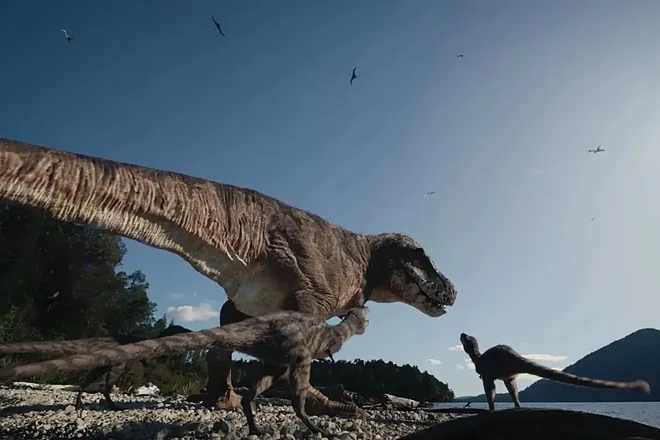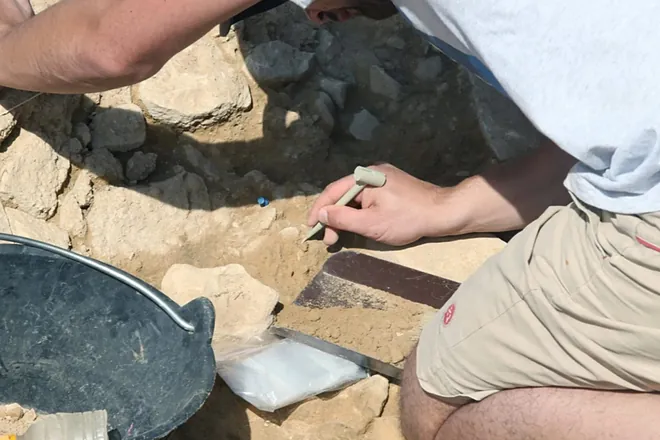For decades, paleontologists believed most dinosaurs lived in herds made up of a single species. But a groundbreaking discovery in 2025 has changed that narrative. Scientists have now found the first direct evidence that different species of dinosaurs traveled together in mixed herds—a behavior never confirmed before in the fossil record.
This new insight gives us a deeper look into how dinosaurs lived, moved, and even protected each other from predators. Here’s everything you need to know about this historic find.

Where Was the Discovery Made?
The breakthrough happened at Dinosaur Provincial Park in Alberta, Canada—a hotspot for dinosaur fossils and trackways. Researchers unearthed a set of 13 dinosaur footprints from at least five individuals, preserved in ancient sediment.
What made this site so unique was not just the quantity of tracks, but their diversity:
- Ceratopsian footprints (from horned dinosaurs like Centrosaurus)
- Ankylosaur footprints (from armored, club-tailed dinosaurs)
- Tyrannosaur footprints (from large predators like T. rex)
These prints weren’t scattered randomly—they overlapped and moved in the same direction, suggesting these dinosaurs were walking together as a group.
What Is a Mixed-Species Dinosaur Herd?
Until now, most fossil evidence pointed to herds made up of a single species. For example, mass bonebeds of Maiasaura or Centrosaurus indicated that many dinosaurs of the same kind lived and died together.
But this new discovery provides something much rarer: evidence that different types of dinosaurs were part of the same herd.
This behavior mirrors what we see in some modern animals. On the African savannah, zebras and wildebeests often travel together, benefiting from shared protection against predators. It’s likely that dinosaurs did the same, banding together for safety, awareness, and resource sharing.
Why Trackways Are So Important
Fossilized bones tell us how a dinosaur died. Trackways tell us how it lived.
That’s why this Alberta discovery is so valuable. The tracks show:
- Multiple dinosaur species walking side-by-side
- A shared direction of movement
- Different sizes and footprints, indicating individuals of different species, not just age ranges
- A Tyrannosaurus footprint intersecting the herd, possibly hunting or stalking
This isn’t just a random meeting. It’s a snapshot of dinosaur life in motion, likely captured within hours or days.
What This Tells Us About Dinosaur Behavior
This discovery gives scientists powerful clues about how dinosaurs interacted with one another, including:
1. Social Tolerance Between Species
These dinosaurs weren’t just coexisting—they were traveling together. That means they tolerated each other’s presence, possibly even relied on it for survival.
2. Shared Ecological Niches
For multiple species to move in herds together, they likely shared similar diets or lived in the same environments. This suggests dinosaurs could partition resources, like different plants, without competing too heavily.
3. Group Defense Against Predators
Just like zebras and wildebeest today, dinosaurs may have formed multi-species herds to stay safe. More eyes meant better odds of spotting a predator like T. rex early.
How This Differs From Previous Evidence
Before this, all evidence of herding came from:
- Bonebeds (like those of Centrosaurus) showing many individuals of the same species buried together
- Trackways from species like Brontosaurus, showing parallel footprints but only of the same kind of dinosaur
- Juvenile/adult groupings, suggesting herds were organized by age, not species
This new site is the first physical proof of interspecies cooperation in the dinosaur world.
Summary of the Findings
| Evidence Type | Previous Understanding | New Discovery Adds |
|---|---|---|
| Bonebeds | Single-species herding | Still true, but doesn’t show daily life |
| Trackways | Parallel movement of one species | Now shows multi-species travel |
| Predator tracks | Rarely seen with herds | T. rex track intersects herd’s path |
| Social behavior | Mostly guessed | Now physically observed through tracks |
Why It Matters for Paleontology
This changes how we view dinosaur ecosystems. Dinosaurs weren’t just groups of the same species sticking together—they may have:
- Lived in more complex communities
- Formed inter-species alliances
- Faced predators using coordinated safety strategies
This find opens the door for more discoveries. Now that scientists know what to look for, they’re likely to identify more mixed-species herds in trackways around the world.
A Step Closer to Seeing the Dinosaur World Clearly
This historic discovery from Alberta isn’t just about footprints—it’s about bringing the ancient world to life. For the first time, we can imagine ceratopsians, ankylosaurs, and other species marching together, navigating their world as a group.
It’s a rare and vivid glimpse into how dinosaurs really lived—and a reminder that we’ve only scratched the surface of their story.







